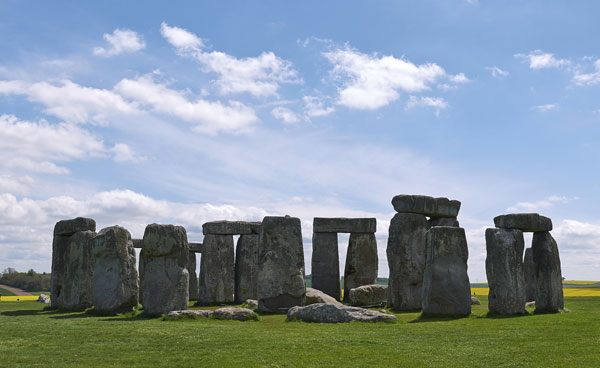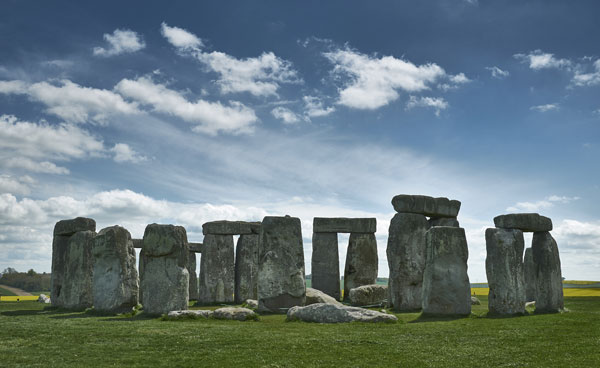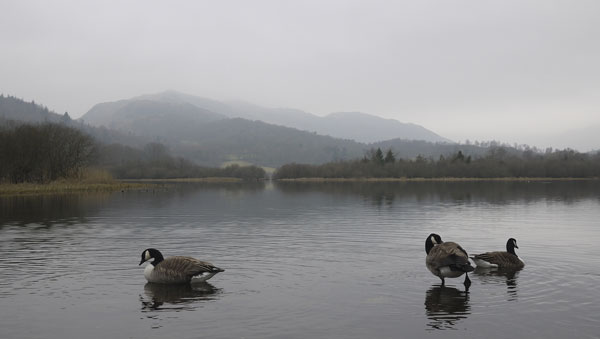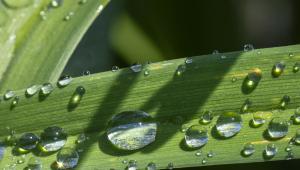Tech Talk: Processing Raw: Myths, Facts And Trade-Offs
“By shooting Raw images, you have much more control over the processing. And archiving images in a Raw format permits you to take advantage of the future improvements in Raw processing capabilities.”
An exposed photographic plate or a segment of exposed film inside a dark camera body are analog equivalents of today’s Raw file. Before digital technology made it possible to capture visual images electronically, a photograph was visible only after it had been processed in a darkroom with chemicals. Now the processing is handled either in camera or by Raw rendering software. The word “Raw” is not an acronym; it’s a simple description for a file that contains pure data, invisible to the human eye.
A Raw file is as invisible as an exposed strip of film once was; the only reason we can see an image preview on the camera is because the Raw data has been rapidly processed by the camera as a “best guess,” JPEG file type. Shooting images to a memory card as a JPEG file only effectively limits the image to what the camera has already processed automatically. By shooting Raw images, you have much more control over the processing. And archiving images in a Raw format permits you to take advantage of the future improvements in Raw processing capabilities. Bottom line: Raw capture offers the most control and power over what an image will look like, both now and in the future.
Interpolation
In 1976, Bryce Bayer of Eastman Kodak patented a way to create color data from a monochrome image sensor. The Bayer pattern image is still widely used today. There have been some variations on the Bayer Matrix, most notably with the Fuji X-Trans sensor and also with the Foveon sensor found in Sigma camera models.
The algorithms are relatively simple, but they can vary tremendously and be refined to not only liberate better colors, but also render finer details and lower image noise. While the basic sum of Bayer “demosaicing” steps is pretty simple, the possibilities for digging deeper, looking for more detail in the file, reducing noise, and improving image quality are probably endless. Thus, no two methods of interpolation or demosaicing a Bayer Mosaic are the same.
All Raw Files Are Not Created Equal
While shooting in Raw mode offers maximum flexibility, there are many other factors to consider:
1) The camera—Raw isn’t necessarily the same camera to camera. Different cameras will perform with different quality expectations even if they are capturing Raw images. Such critical elements include sensor design, lens and camera quality.
2) A photographer’s skill—Simply deciding to capture an image in Raw format is not a “Get out of jail free” card. While it is possible to fix some errors like under- or overexposure, the more accurate the data entering the Raw conversion process, the better the results when it comes to processing.
3) The Raw rendering/image processing software—As mentioned, the basic mathematics of Bayer interpolation (or demosaicing) is very simple. But different algorithms will produce different results; that is why different software packages can produce vastly different image quality results.
4) Variety of proprietary Raw file formats—Most camera manufacturers today produce their own proprietary camera Raw files (which may vary by model from the same manufacturer); this lets them decide how data is assembled and what additional (meta) data they would like to include. Options might focus on lenses, accessories, GPS coordinates, picture styles, or data intended for R&D.
The Trade-offs
For manufacturers of Raw conversion and image-editing software, delivering a software tool that produces superior image quality involves many trade-offs between competitive features, workflow, and ease of use. Engineering and software development teams set priorities accordingly and are prepared for dealing with numerous challenges.
One might say that the key challenge/trade-off is time. If one had five minutes to process a single image, then it would be possible to run all kinds of clever mathematics to extract amazing quality. Practically speaking, however, for a shoot of more than 300 different images, most photographers simply can’t wait that long for processing. There always must be a balance between quality and the experience of actually using a Raw conversion application.
Another issue is how far the manufacturer should go with default corrections—it’s a very fine balance. While it may be possible to provide an image that exactly replicates a particular photographer’s vision, that would probably require more input from that photographer, thus taking much more time. The alternative is for the manufacturer to determine, based on experience, what the best starting point might be in rendering the Raw image and what will give the best “out of the box” or default that compromises neither quality nor creativity.



This set of images shows the power of Raw processing. Image 1 is a direct from camera JPEG, showing a pale approximation of the vibrant potential of the image found in the Raw file. Image 2 is a result of the Auto Adjust feature in Phase One’s Capture One software. While a vast improvement over the JPEG, with much improved color, contrast, and tonal separation, the true power of Raw comes when the photographer takes a hand in making personal decisions about the image, as seen in the interpretation in Image 3, processed using Phase One’s Capture One (V7) software.
Every Bit Counts
Once a Raw file is processed, then what? First, in general, it always makes sense to retain the original Raw files. One of the key reasons for saving them is that they may be revisited and used in the future. Fortunately, media storage costs have come down in price, so it is much more feasible to save Raw files.
Next, if one wishes to move into Adobe Photoshop for retouching, selective adjustments, color changes, etc., then saving the newly processed Raw file and exporting it in a 16-bit Tagged Image File Format (or TIFF) makes sense.
The numbers associated with “bit” refer to the depth of an image per color channel (Red, Green, and Blue). An 8-bit image has only 256 levels—from 0 (Black) to 256 (White). If you imagine a scale of pure black to pure white, then there could be only 256 gradations in between. Conversely, a 16-bit image has more than 65,000 levels from black to white. The benefit of this approach is that it offers much more data to play with when making adjustments to an image. I like to use the term “elastic” in that you can stretch the boundaries of an image so much more than a limited 8-bit image. For example, an 8-bit image has 256 tones per channel per pixel; a 16-bit image has over 65,000 tones per channel per pixel. Extrapolating that out gives you 16.78 million total possible tones in an 8-bit file, and 281 trillion total possible tones in a 16-bit file. That’s quite a difference!
While you might think that a 14- and 16-bit file are close, a 16-bit file actually offers an additional 50,000 levels to play with, and every bit counts. Thus, it makes sense to export your images from your Raw editor as 16-bit files if you wish to make additional changes in an image editor such as Photoshop. This does not mean to say that it is impossible to make changes to 8-bit files, but the data is limited. This can lead to problems such as posterization. The trade-off to working with 16-bit files is that they are twice the size of their 8-bit equivalents and therefore may be slower to work with.


While some might consider the JPEG capture of this scene as shown in Image 1 acceptable, the true potential of the file is realized only when the richness of the Raw file is mined. Image 2 is just one possible version when done in Capture One software.
File Compression
Various file types can often be compressed. This includes the TIFF file format. “Compression” can reduce the size of an image file to make it more manageable (e.g., for transfer across the Internet) or to save storage space.
Compression is often described as lossless or lossy. Lossless compression can reduce the file size of an image but, importantly, retains the quality. For example, LZW compression takes advantage of the fact that almost any data file has recurring patterns and seeks to encode the data by labeling these patterns with smaller pieces of code. Compression ratios of up to 5:1 can be achieved with this method, but of course the success of the compression can vary.
Lossless compression could have an even greater compression ratio but at the expense of image quality. This loss of image quality might be acceptable, depending upon how the image is going to be used. But one should be fearful of lossy compressed Raw data, as that Raw data is in fact our “negative” or master.
The advantage of using the JPEG format is that it typically achieves a 10:1 compression ratio with little noticeable difference in image quality. This could be completely acceptable for images displayed on the web, for example, but less suitable for fine art printing of large gallery prints where every piece of quality counts. It really depends on the viewer or what one is prepared to accept in terms of an image quality reduction.
The major disadvantage of the JPEG file, as mentioned earlier, is that it should be considered “closed” and not suitable for further adjustments, or at least not drastic adjustments that are best handled with a capable Raw image processor. Thus, JPEG is typically thought of as a “final format.”
The Future Of Raw
The development of Raw processing applications has already reached a high level of performance. However, innovations in applied mathematics can occur, as companies like Phase One constantly research new ways to improve Raw image processing. With processing improvements, photographers can go back and reprocess older Raw files.
And sensor design continues to improve. More recently we have seen impressive developments in sensors being able to record cleaner images at higher ISOs, capture at incredibly fast frame rates, and the ability to handle video. So as the sensors improve, the net result is that Raw converters will have even better data to work with. Perhaps in the future we can perfect the default result so that nothing more needs to be done; however, predicting the future of human nature, creativity, and vision is always the hardest part.
About The Author
David Grover, Support and Business Development Manager, Software at Phase OneDavid Grover studied advertising and editorial photography, then worked as a color photographic printer and on the team at one of the first photographic studios in London to “go digital.” Since then, his work as a consultant to leading camera manufacturers (focusing on education and training programs) has helped him develop a keen understanding of what elements drive a successful workflow. His photographic experience comprises commercial photography, portrait photography, color management, and project management. His technical background includes high-end camera systems, especially medium format, and the high-end image processing software Capture One Pro. Currently he is a business support manager at Phase One’s software division.
- Log in or register to post comments








































